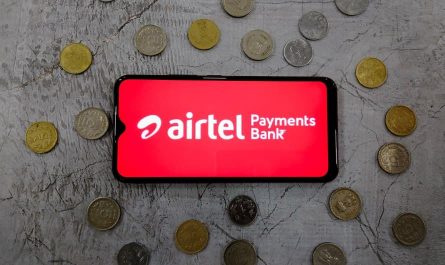National Electronic Funds Transfer (NEFT) is widely accepted in India. It is majorly due to less paperwork, hassle-free process,etc..
Thus, many people (including us) prefer transferring funds through NEFT today.
Let us help you in understanding what is NEFT and why everybody is choosing NEFT in detail below:
Understanding NEFT:
Popularly known as NEFT, National Electronic Funds Transfer is an online payment method, which was first set up in 2005 by the Reserve Bank of India (RBI). The bank created this mode to facilitate one-to-one payment across the country.
With the NEFT facility, the bank allows you to electronically transfer money from any branch to a person having an account with some other bank. Besides, it also lets you use the NEFT facility for making automatic payments from your bank account towards credit card bills, EMIs, and so forth.
Now that you know what NEFT is, let’s proceed further to find out the detailed features of this payment mode. So, come, take a look below:
NEFT Features:
1. It is a one-to-one payment mode
2. It can be processed only between the banks that provide NEFT-enabled services
3. It takes a couple of hours for NEFT transactions
4. NEFT transactions no longer have fixed timings. Today, NEFT transactions can be done all day long, making it a 24×7 facility
5. It is important to include the details of the beneficiaries before the NEFT transfer without fail
6. The NEFT payments can be settled within batches of half an hour
7. NEFT transfers no longer levies charges that need to be paid according to the RBI guidelines
With the meaning and features of NEFT transfer clear, let’s go ahead and understand how to carry out these electronic transactions on BHIM UPI app in detail below:
Steps for NEFT Transfer:
- Head straight to India’s first digital payments bank app, Airtel Payments Bank that enables this facility
- Press the ‘Transfer money’ button on the app
- Click ‘Transfer to bank’
- Submit the details of the beneficiary
- Enter the transfer amount
After following these steps, the bank will authorize the payment in half-hourly batches. But hey, do you know what happens after they process your payment? Not quite sure? No worries, we’re here to help you find out what happens next:
- Your bank will draft a standard message confirming the details of the NEFT transaction
- After the bank prepares the message, they will send it across to a pooling centre called NEFT Service Centres
- These pooling centres further pass the message (shared by the bank) to the NEFT Clearing Centre, which is also operated and managed by RBI
- The Clearing Centre will then sort the different payment requests bank-wise
- Later, they will create accounting entries that specify the total amount that needs to be received from the originating bank. For instance, if you’ve initiated a transfer of Rs. 2 Lakhs, the centre creates an entry stating that the bank needs to pay the same amount
- They will then forward this remittance message to the destination bank through their pooling centres
- When the message is delivered to the destination bank, it will then forward to the beneficiary’s account
Now that you know how the bank transfers the amount to the beneficiary, let’s understand what can also happen in case there is no credit to the beneficiary:
- In case there is no credit to the beneficiary, the bank will automatically return the entire amount. However, it is only if you have provided the correct details of the beneficiary
- In case, the bank hasn’t returned the money, contact your branch immediately
In order to avoid such a scenario, it is important to keep certain things, such as the IFSC code, account number, and so forth in mind.
Let us help you understand a few key things that you should keep in mind before making the transfer:
Things to keep in mind for NEFT transfers:
-
Beneficiary’s personal information
For an NEFT transfer, you must correctly submit the following details of the beneficiary:
- Name
- Account number
- Bank branch
- Bank name
-
The amount to be remitted
There are no caps on the amount limit for such a transfer. So, see to it that you check with the bank and enter the accurate amount without fail.
-
IFSC code
If you submit the wrong IFSC code, your transaction will be cancelled.
In a nutshell, NEFT transfers are one of the popular ways to make online transactions. So, see to it that you do it the right way by entering the accurate details, amount, etc. to avoid any errors in the future. Good luck!



